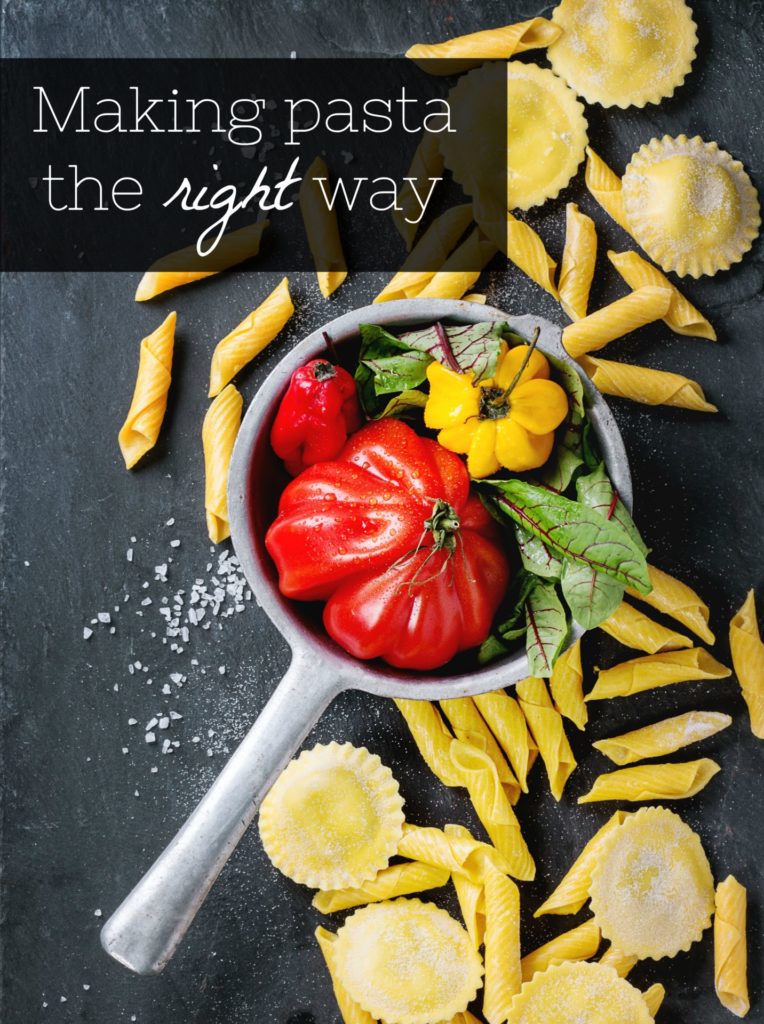Ziti, rotini, penne and rigatoni: all are forms of pasta or, more simply, noodles. Once a mainstay of many American diets, pasta developed a poor reputation in the 1990s as “carbohydrate” became a dirty word. Spaghetti squash and meatballs replaced spaghetti and meatballs. Baked zucchini replaced baked ziti. And cauliflower cheese casserole replaced mac and cheese (I admit, I made it).
 Cutting back on pasta was justified; serving sizes were becoming larger than basketballs, and toppings were often monumentally high in unhealthy fats and sodium – think Alfredo and cheese sauces along with stacks of Italian sausage.
Cutting back on pasta was justified; serving sizes were becoming larger than basketballs, and toppings were often monumentally high in unhealthy fats and sodium – think Alfredo and cheese sauces along with stacks of Italian sausage.
But one can only go so long without pasta, and from a nutrition standpoint, I am happy to see it back on menus and plates. Pasta is typically made from semolina, a finely ground durum wheat flour, and is high in complex carbohydrates. Benefits of carbohydrates include their use as energy for the brain (they are the only nutrient the brain can use) and muscles (important for daily activities like walking and lifting). For athletes of all levels, carbohydrates are especially important as a source of fuel for exercise as well as a storage form the muscles can hold on to for later energy.
Enriched pasta is low in sodium and a good source of iron and B vitamins. Choose whole-wheat pasta and you will also get a good dose of dietary fiber and magnesium. Black bean spaghetti, chickpea rotini and other bean-based noodles are a great alternative if you are looking for even more fiber and minerals, and soba, or buckwheat noodles, are a hearty gluten-free choice that contain antioxidants in addition to the carbohydrates, fiber and minerals of the other pastas. Most noodles are inexpensive and versatile, too, tasting just as good hot or cold.
The key is to eat the right amount of pasta in order to allow room on your plate for protein and vegetables. No more three-cup portions of your favorite noodle; a portion is ½ cup, which looks like a tennis ball or a computer mouse. Add a palm-size portion of protein (ground beef or turkey, tempeh, shrimp or salmon) and a generous portion of vegetables (baked spaghetti squash, sautéed greens and balsamic Brussels sprouts are my favorite) and you have a well-rounded meal that is the picture of balance. If only we could all settle in the middle when we serve our food: midway between the extremes of “no pasta” and “no limits.” Enjoy pasta again, one small portion at a time.
Melissa Wdowik, PhD, RDN, FAND, is an assistant professor at Colorado State University in the Department of Food Science and Human Nutrition, and director of the Kendall Reagan Nutrition Center.





